|
Varicose
Vein Treatment
|
Ultrasound
Guided Laser Ablation
|
Varicose Vein Treatment Center
|
|
Longview Radiologists, Kelso, WA
|
| Scheduling
(360) 425 -
5131
Orhan Konez, MD, Interventional Radiologist
|
|
|
 Laser
Ablation
Laser
Ablation |
 Foam
Sclerotherapy
Foam
Sclerotherapy |
 Phlebectomy
Phlebectomy |
|
|
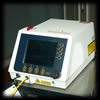 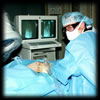

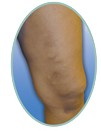 |
|
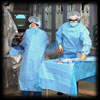 |
 Non-surgical varicose vein treatment
Non-surgical varicose vein treatment |
 Treatments covered by most insurance
Treatments covered by most insurance |
 No hospitalization needed
No hospitalization needed
|
 45 minute treatment
45 minute treatment
|
 Same day recovery
Same day recovery
|
 Board certified physicians
Board certified physicians |
|
| * |
| Our
interventional radiology specialists take
varicose vein treatment very seriously. You
can be confident that our board-certified
physicians are expertly qualified to provide
you the most effective and professional
varicose vein removal and treatment
available.
With recent advancements
in the use of medical lasers, the removal and treatment of
varicose vein disease has never been so painless, quick and
easy. Plus, most insurance providers cover medical removal of
varicose veins.
Take advantage of our
varicose vein expertise. Call our office at (360) 425
- 5131 to schedule a consultation!
How
varicose veins develop?
Venous
insufficiency is a very common condition resulting from
decreased blood flow from the leg veins up to the heart,
with pooling of blood in the veins. Normally, one-way
valves in the veins keep blood flowing toward the heart,
against the force of gravity. When the valves become
weak and don't close properly, they allow blood to flow
backward, a condition called reflux. Veins that have
lost their valve effectiveness, become elongated,
rope-like, bulged, and thickened. These enlarged,
swollen vessels are known as varicose veins and are a
direct result of increased pressure from reflux. A
common cause of varicose veins in the legs is reflux in
a thigh vein called the great saphenous, which leads to
pooling in the visible varicose vein below.
|
|
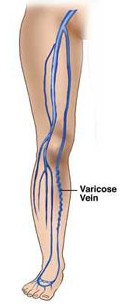 |
|
| |
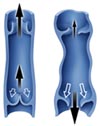 |
|
How
Common Is This Condition?
Chronic
venous disease of the legs is one of the most
common conditions affecting people of all races.
- Approximately
half of the U.S. population has venous
disease--50 to 55% of women and 40 to 45% of
men. Of these, 20 to 25% of the women and 10
to 15% of men will have visible varicose
veins.
- Varicose
veins affect 1 out of 2 people age 50 and
older, and 15 to 25% of all adults.
|
|
| * |
Risk
Factors: Age,
family history, female gender, pregnancy, especially multiple
pregnancies
Symptoms:
Symptoms caused by venous
insufficiency and varicose veins include aching pain, easily
tired legs, and leg heaviness, all of which worsen as the day
goes on. Many people find they need to sit down in the
afternoon and elevate their legs to relieve these symptoms. In
more severe cases, venous insufficiency and reflux can cause
darkening of the skin and wounds that may be very difficult to
treat. One percent of adults over age 60 have chronic wounds
known as ulcers.
|
|
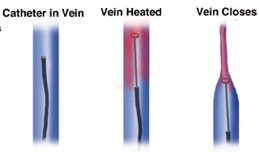 |
|
| * |
| People who have venous
insufficiency can have symptoms even without visible varicose
veins. The symptoms are caused by pressure on nerves by
dilated veins.
Diagnosis:
An
interventional radiologist, a doctor specially trained in
performing minimally invasive treatments using imaging
guidance, will use duplex ultrasound to assess the venous
anatomy, vein valve function, and venous blood flow changes,
which can assist in diagnosing venous insufficiency. The
doctor will map the great saphenous vein and examine the deep
and superficial venous systems to determine if the veins are
open and to pinpoint any reflux. This will help determine if
the patient is a candidate for a minimally invasive treatment,
known as vein ablation.
Treatment:
This minimally-invasive
treatment is an outpatient procedure performed using imaging
guidance. After applying local anesthetic to the vein, the
interventional radiologist inserts a thin catheter, about the
size of a strand of spaghetti, into the vein and guides it up
the great saphenous vein in the thigh. Then laser or
radiofrequency energy is applied to the inside of the vein.
This heats the vein and seals the vein closed.
Reflux
within the great saphenous vein leads to pooling in the
visible varicose veins below. By closing the great
saphenous vein, the twisted and varicosed branch veins,
which are close to the skin, shrink and improve in
appearance. Once the diseased vein is closed, other
healthy veins take over to carry blood from the leg,
re-establishing normal flow.
Benefits
of Vein Ablation Treatment:
- The treatment takes
less than an hour and provides immediate relief of
symptoms.
- Immediate return to
normal activity with little or no pain. There may be minor
soreness or bruising, which can be treated with
over-the-counter pain relievers.
- No scar. Because the
procedure does not require a surgical incision, just a
nick in the skin, about the size of a pencil tip, there
are no scars or stitches.
- High success rate and
low recurrence rate compared to surgery.
- The success rate
ranges for vein ablation ranges from 93 - 95 percent.
Insurance:
Many insurance carriers
cover the vein ablation treatment, based on medical necessity
for symptom relief.
Surgical
Therapy?
Traditionally, surgical
ligation or vein stripping was the treatment for varicose
veins, but these procedures can be quite painful and often
have a long recovery time. In addition, there are high rates
of recurrence with the surgical procedures. One study found a
29% recurrence rate after ligation and stripping of the
greater saphenous vein, and a rate of 71% after high ligation.
These recurrence rates are similar to those reported in other
studies.
What
other procedures available to treat venous varicosities?
In
addition to image guided intravenous laser ablation (closure)
of the greater saphaneous veins, sclerotherapy and phlebectomy
procedures are available depending on the nature and severity
of the condition.
| * |
|
Scheduling
(360)
425 - 5131 |
|
|
|
|